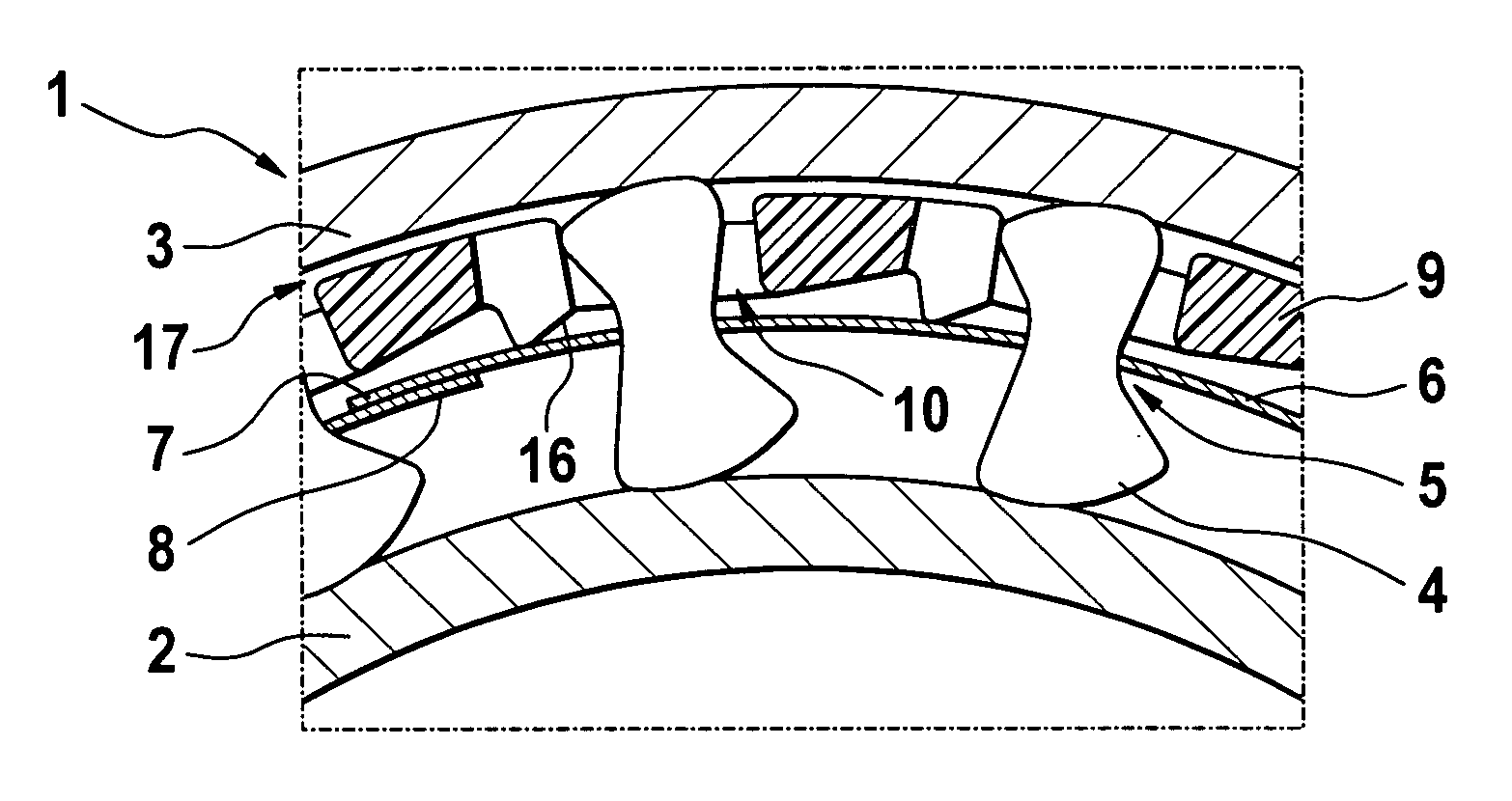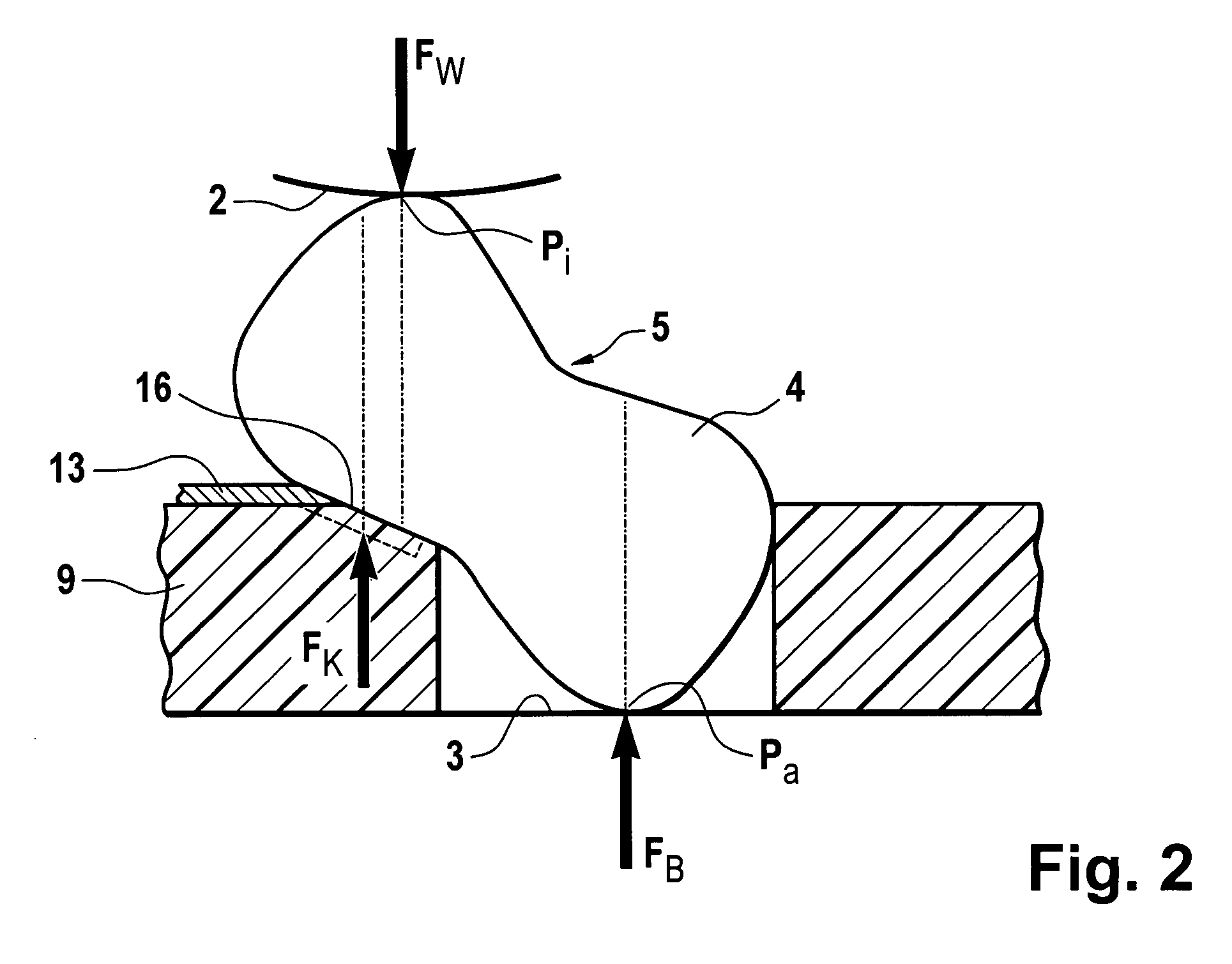Freewheel coupling
a freewheel and clutch technology, applied in the direction of clutches, freewheel clutches, brake types, etc., can solve the problem of not completely fixed relative radial position of the cage, and achieve the effect of good resistance to oils
- Summary
- Abstract
- Description
- Claims
- Application Information
AI Technical Summary
Benefits of technology
Problems solved by technology
Method used
Image
Examples
Embodiment Construction
[0018]FIGS. 1a to 1d show, in section, simplified cross-sectional illustrations of a freewheel coupling 1, also designated as a clamping body freewheel, in different states of conventional operation. The freewheel coupling 1 is used, for example, in a torque converter or in an automatic transmission of a motor vehicle. In the torque converter, the freewheel coupling 1 can guarantee a freewheel function for the guide wheel arranged between the pump wheel and the turbine wheel.
[0019] The essential components of the freewheel coupling 1 are an inner ring 2 and an outer ring 3, between which several clamping bodies 4 are arranged. The clamping bodies 4 have a reduced-size shape with a narrow section 5, with these narrow sections 5 determining the position of a spring band 6 arranged essentially concentrically to the inner ring 2 and outer ring 3. The spring ends 7, 8 not connected to each other overlap, as follows from FIG. 1a. Radially between the spring band 6 and the outer ring 3 th...
PUM
 Login to View More
Login to View More Abstract
Description
Claims
Application Information
 Login to View More
Login to View More - R&D
- Intellectual Property
- Life Sciences
- Materials
- Tech Scout
- Unparalleled Data Quality
- Higher Quality Content
- 60% Fewer Hallucinations
Browse by: Latest US Patents, China's latest patents, Technical Efficacy Thesaurus, Application Domain, Technology Topic, Popular Technical Reports.
© 2025 PatSnap. All rights reserved.Legal|Privacy policy|Modern Slavery Act Transparency Statement|Sitemap|About US| Contact US: help@patsnap.com



